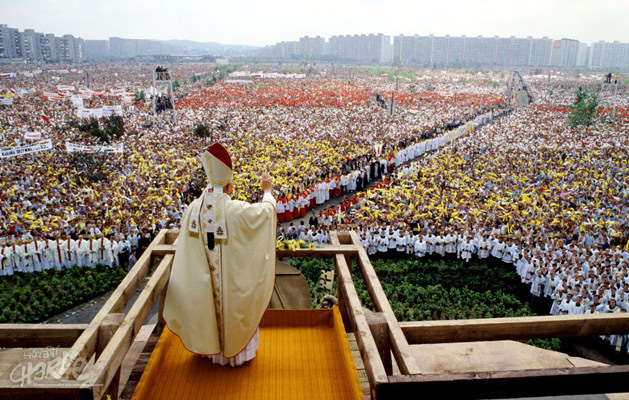
The huge Polish reception
to Pope John Paul II's visit in June of 1979
constituted a huge challenge
to the authority of the Polish Communists
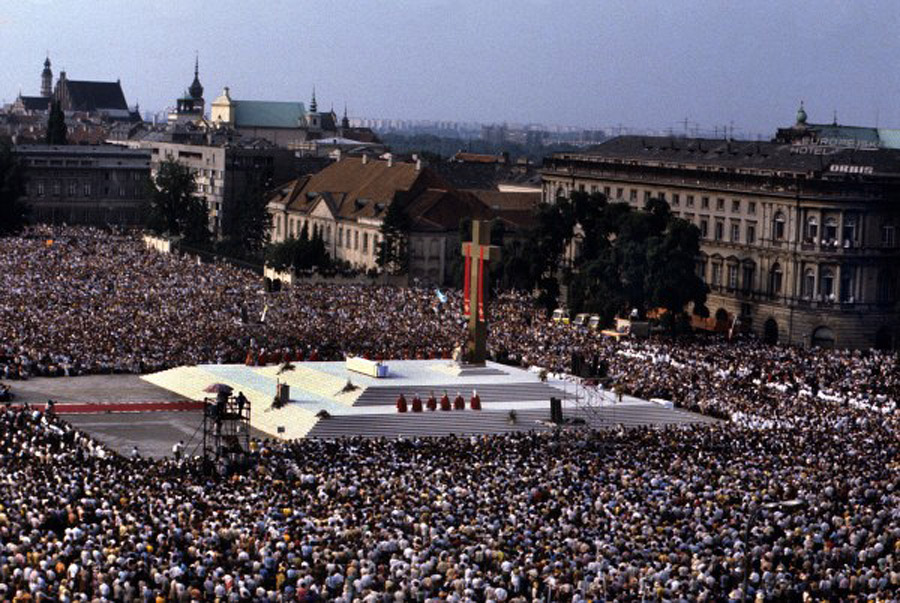
Then, led by Lech Walesa's and his dock-workers' union "Solidarity,"
Polish workers give serious
affront to the Communist system in Poland
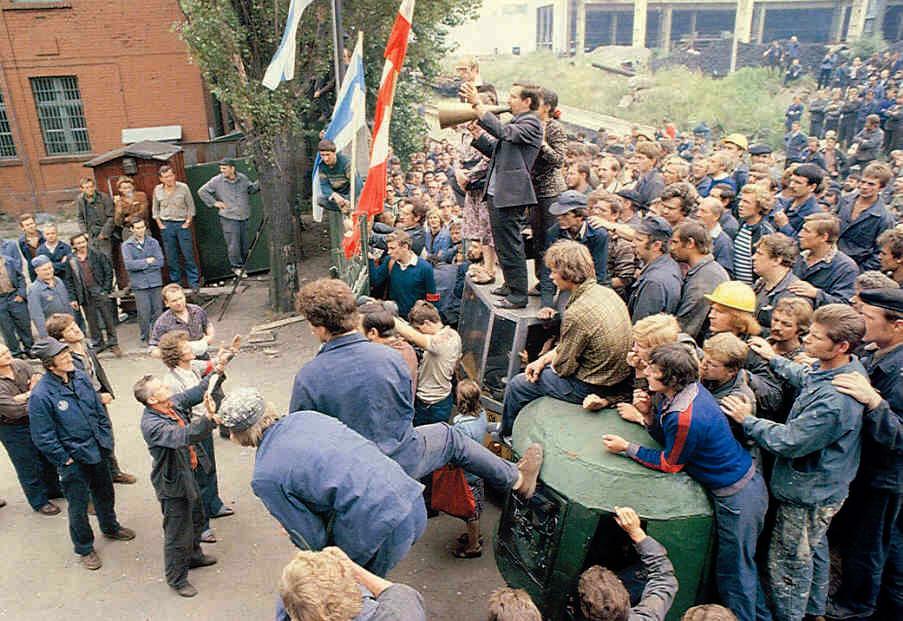
Lech Walesa leading the strike
of workers at the Lenin Shipyards in
Gdansk, Poland
– August 30, 1980
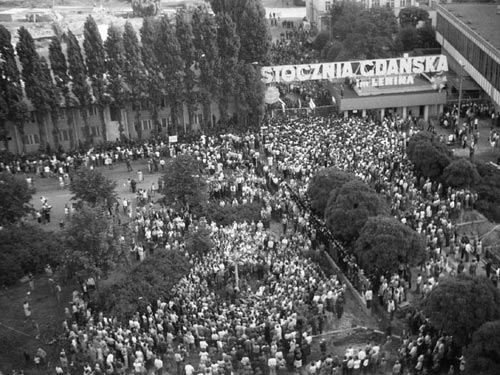
Striking workers at the Lenin
Shipyard – 1980
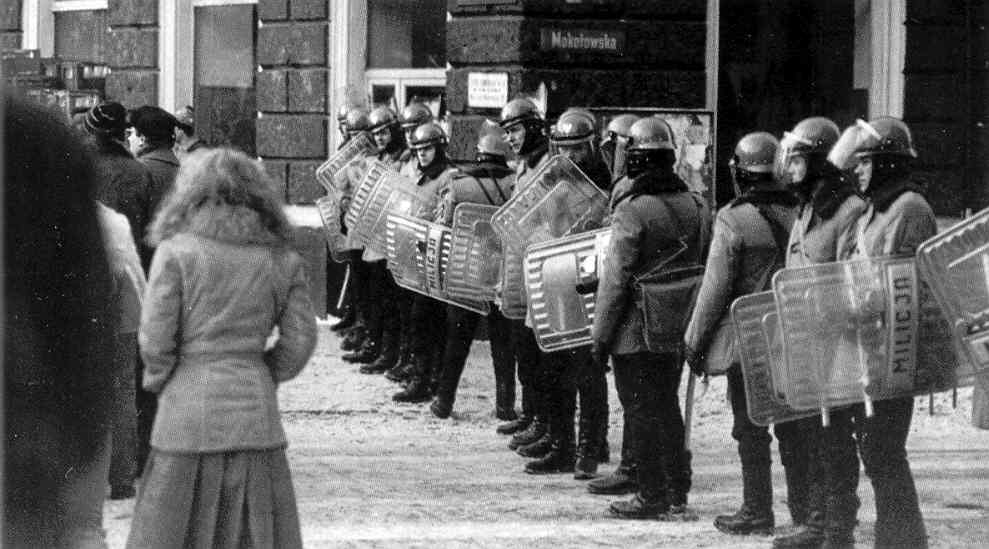
Polish military under Gen.
Jaruzelski, fearful of a Soviet military reprisal (such as occurred in
Czechoslovakia in 1968), retake Poland from Solidarity – December 1981
But things are also stirring in the Soviet Union, as the Soviet Empire's leadership
changes hands rapidly over the course of the early-to-mid 1980s
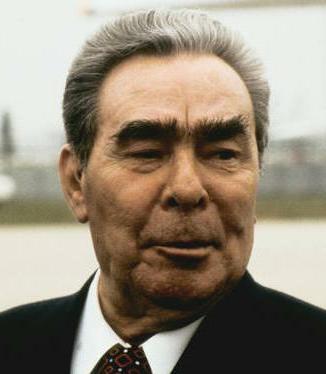
Leonid Brezhnev
Communist Party Chairman
1964-1982
|
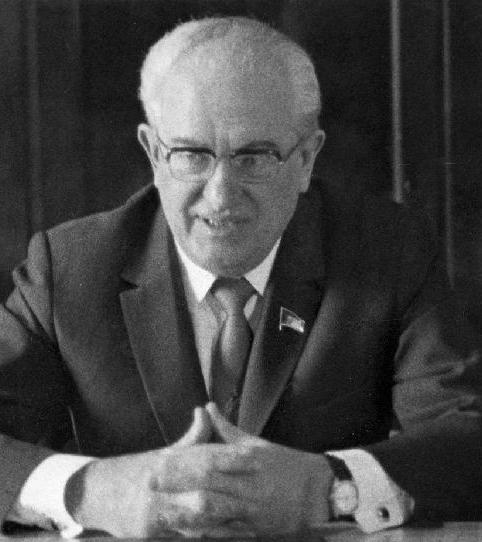
Yuri Andropov
Communist Party Chairman
1982-1984 |
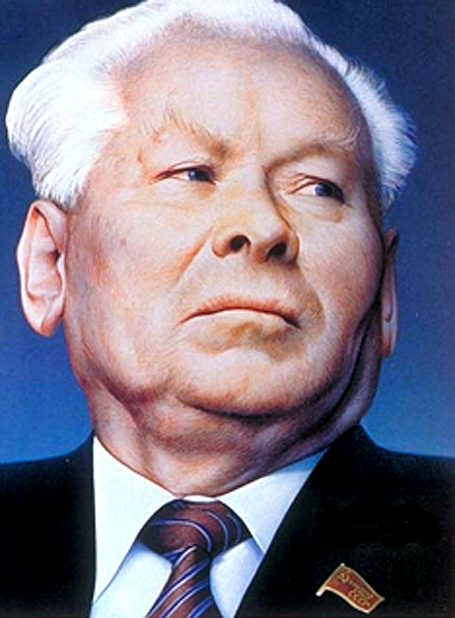
Konstantin Cernenko
Communist Party Chairman
1984-1985
|
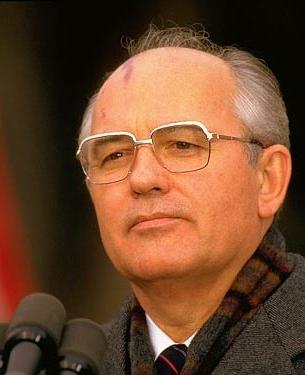
Mikhail Gorbachev
Communist Party Chairman
1985-1991
|
Also ... the Soviet position in Afghanistan begins to come apart (early 1980s)
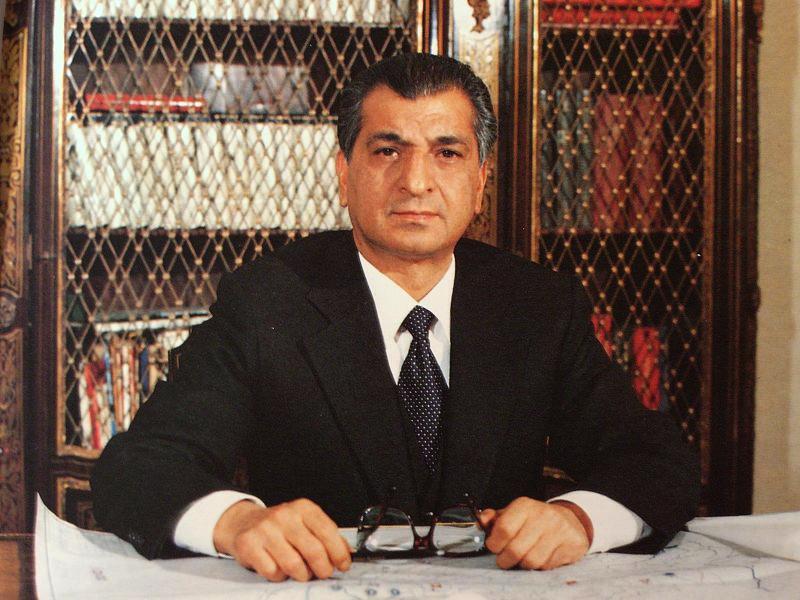
Babrak Karmal
chairman of
Revolutionary Council of the Democratic Republic of Afghanistan
(1979-1986).
The Soviets had installed
this Afghan Communist leader in Kabul in 1979 in the hopes
that he might
keep more effective control over
Afghan politics than had
his Communist predecessor,
Hafizullah Amin – whom Soviet troops assassinated
when they first invaded the country in 1979.
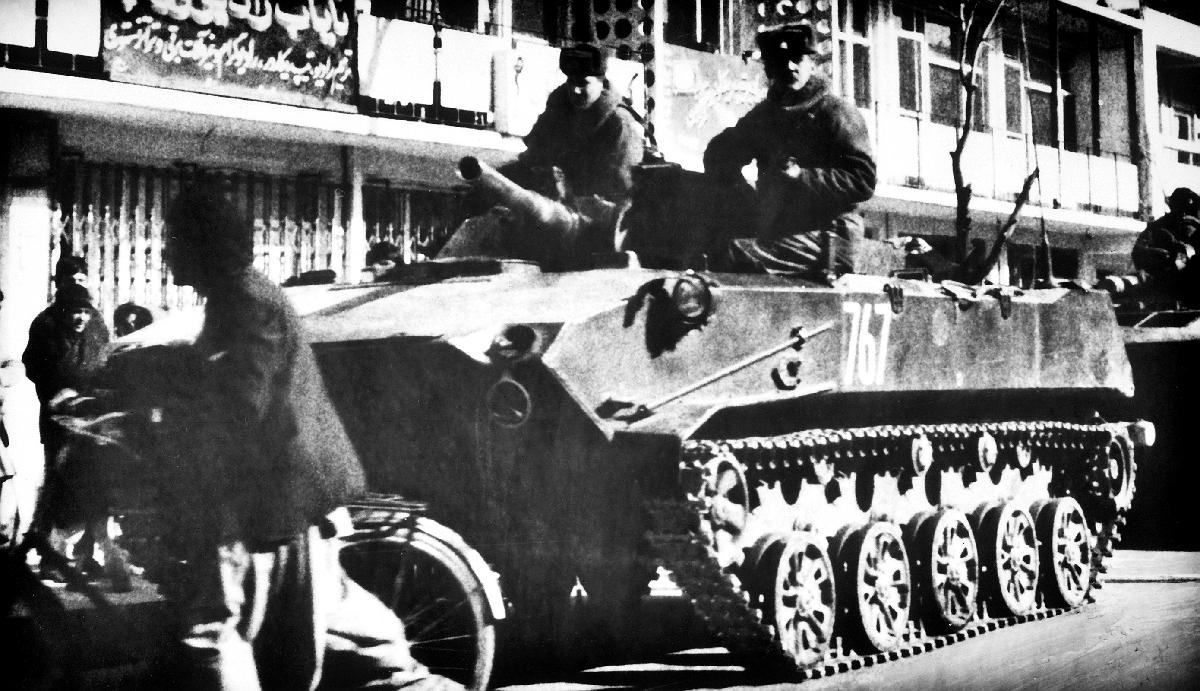
Soviet paratroopers aboard
a BMD-1 in Kabul
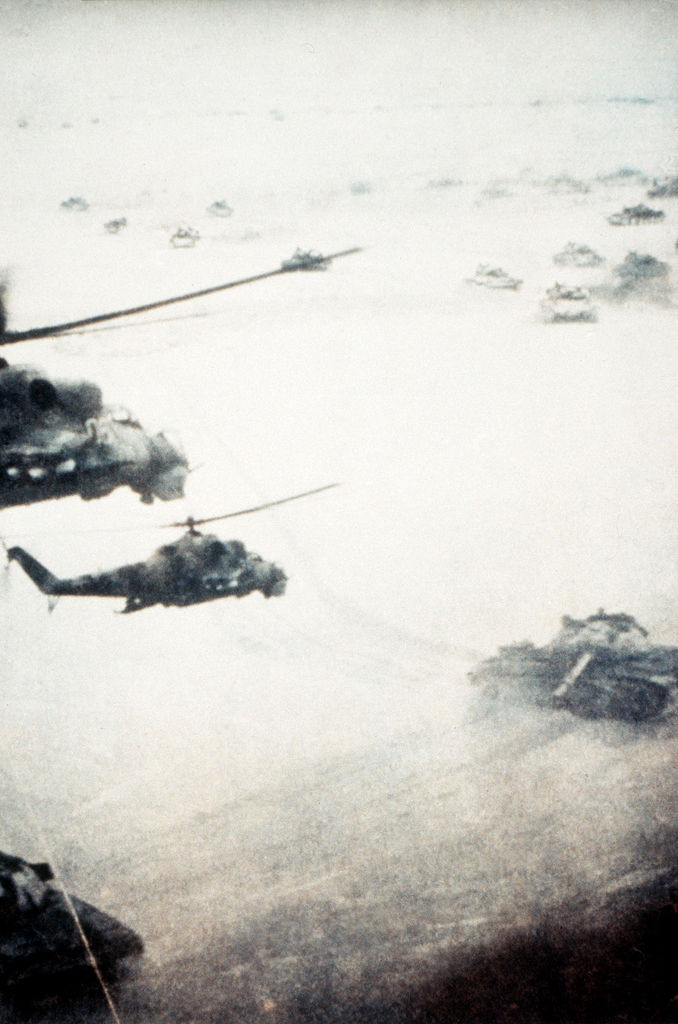
Soviet helicopters working
with Soviet tanks in Afghanistan
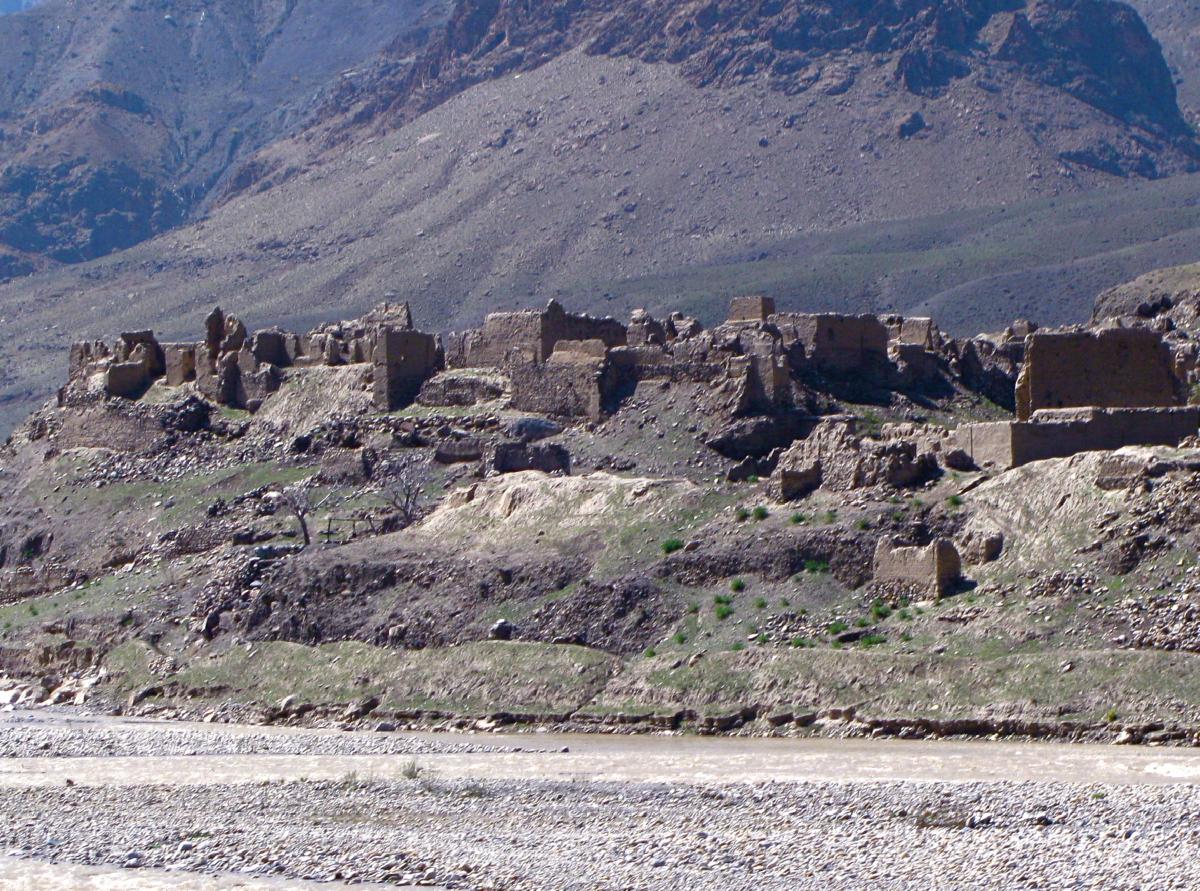
Afghan village destroyed
by Soviet troops
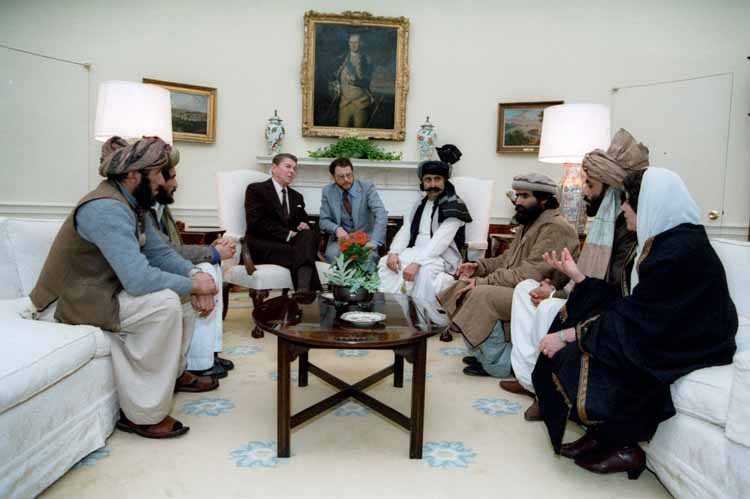
Reagan listening to the
mujahidin's
description of Soviet atrocities in Afghanistan – February 1983
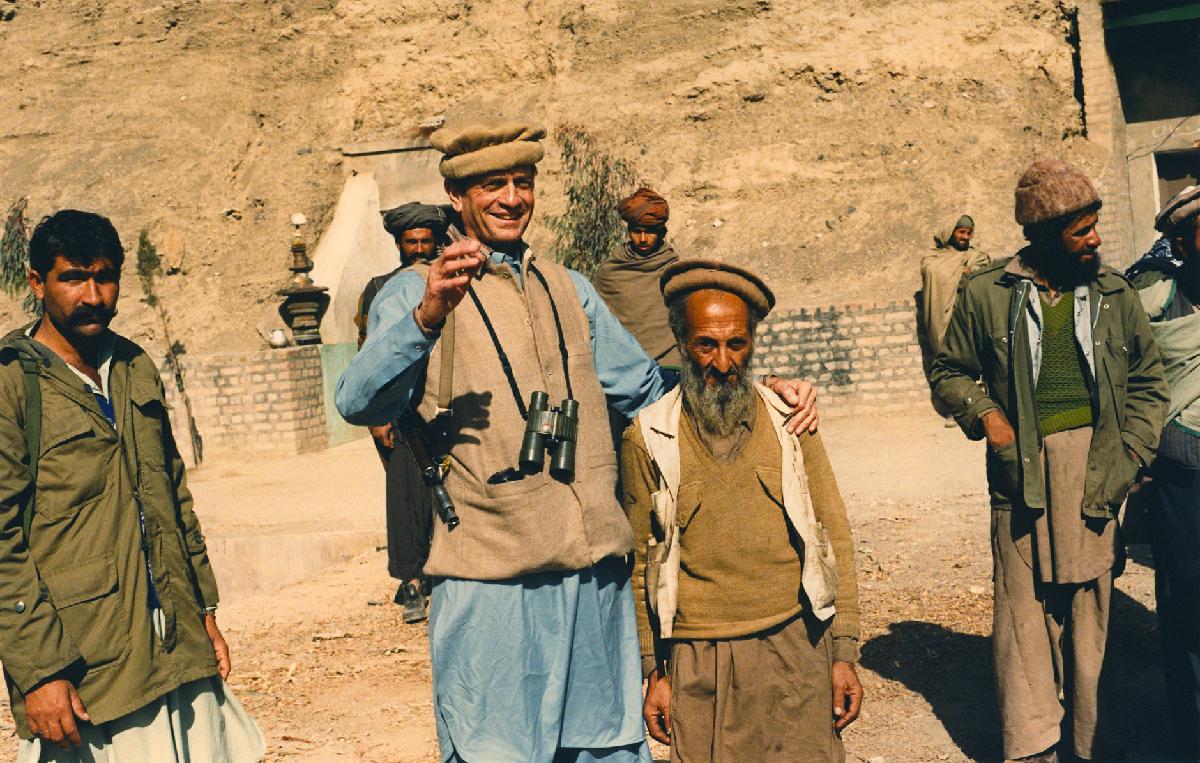
Texas Congressman Charlie
Wilson in Afghanistan
Wilson was a prime mover
in Operation Cyclone, in which the US sent $ millions to support the
mujahidin in their fight against the
Soviets (unfortunately much of the money ended up in corrupt Pakistani
military hands). Resistance by conservative
Muslim mujahidin however is grinding down the Soviet effort to maintain Communist control
in Afghanistan.
|
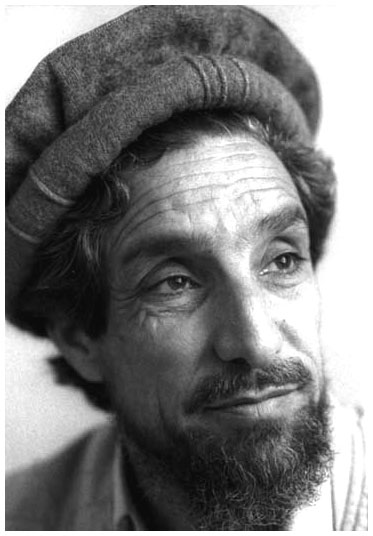
Ahmad Shah Massoud – the
"Lion of Panjshir"
|
This
engineer-turned-mujahidin
proved to the the most effective of the Afghan resistance commanders. When the Taliban later
took over the country, he became their prime opponent. The Taliban
assassinated him just days before the September 11, 2001 attack
on the New York Twin
Towers)
|
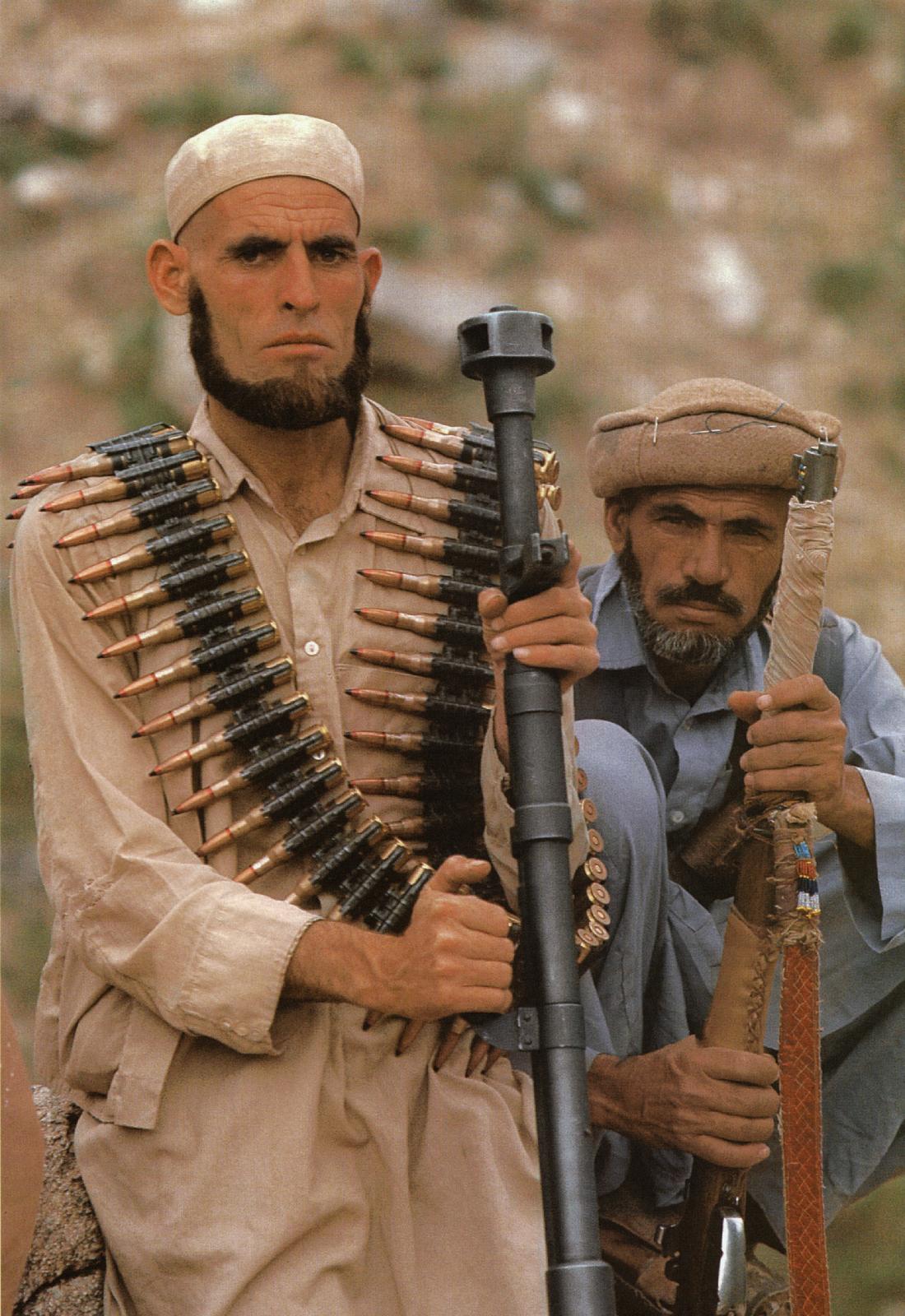
Well armed mujahedin
confronting
Soviet troops in Afghanistan
The new Soviet leader Gorbachev was pushing for a new face
to Communism
with the policies of perestroika (economic reform), glasnost (personal freedom),
and demokratizatsiya (democratization).
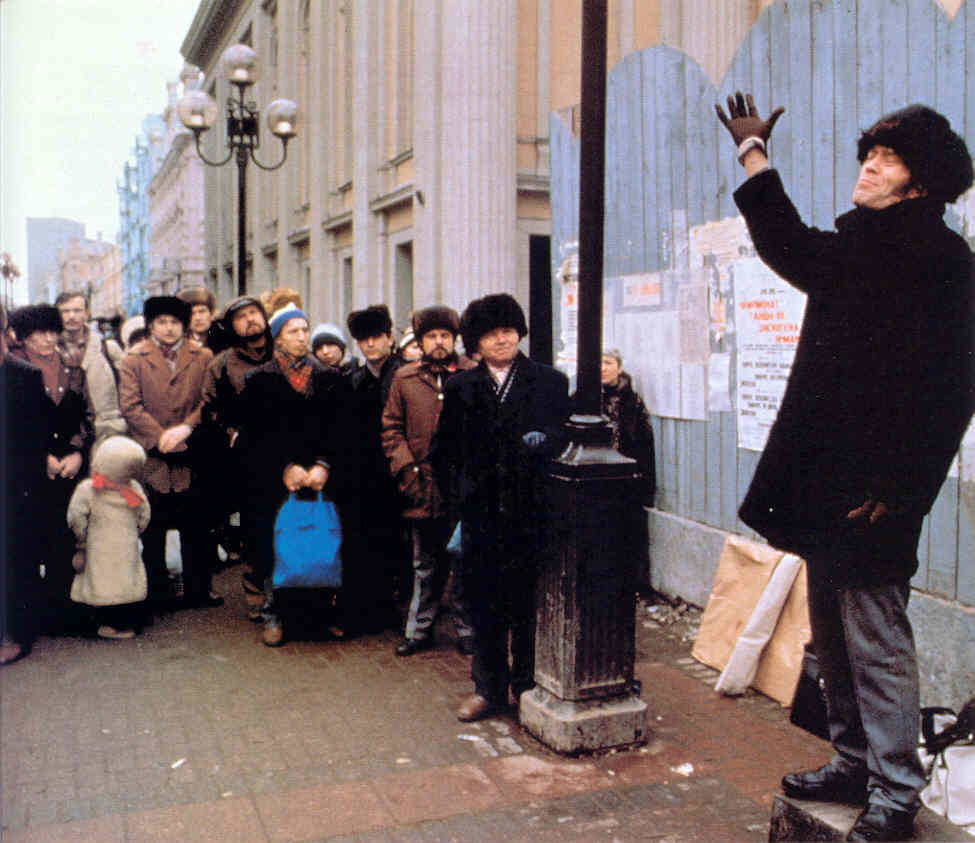
A Russian practicing
glasnost
on a Russian street
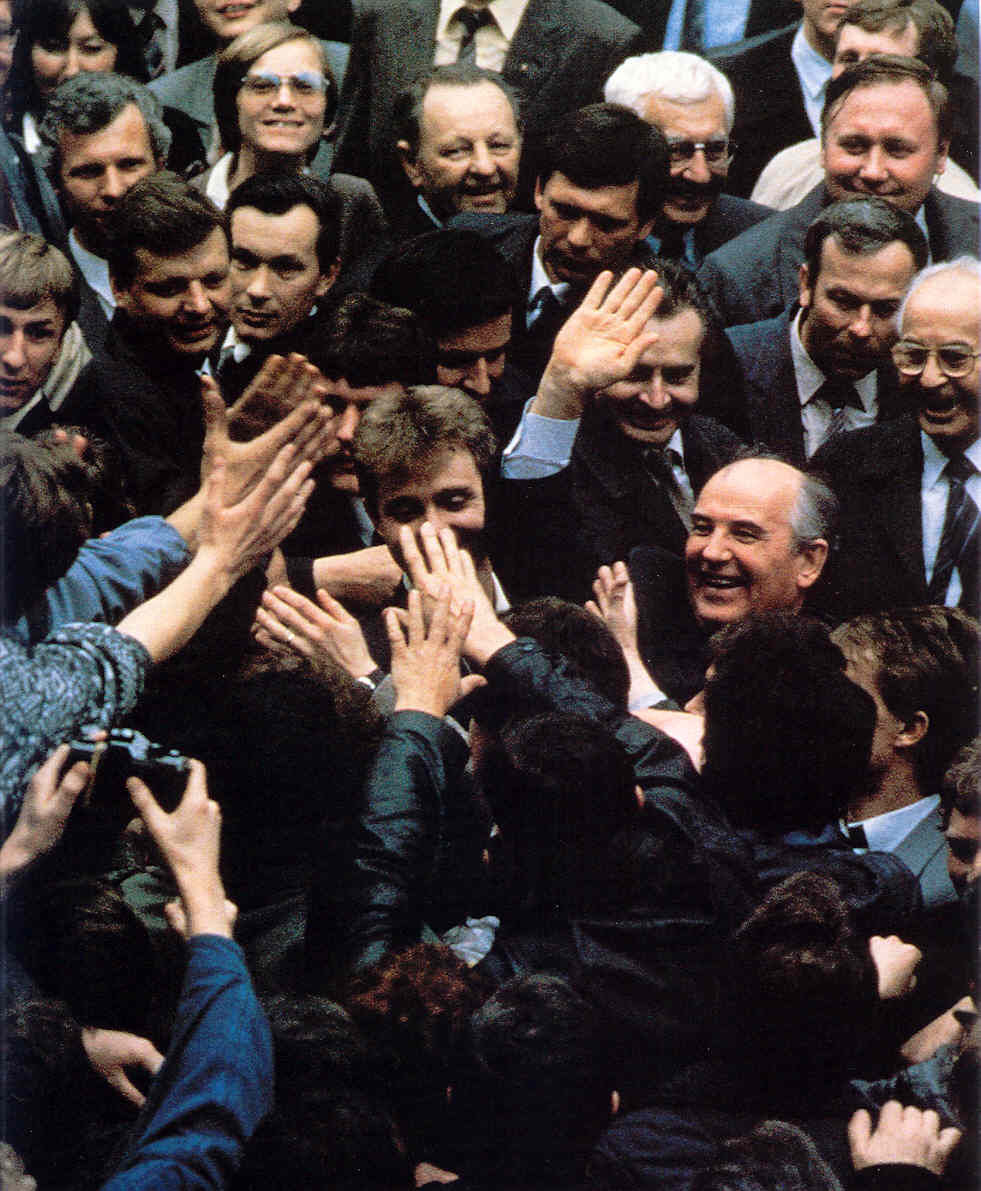
Gorbachev welcomed in Prague
for his reforms
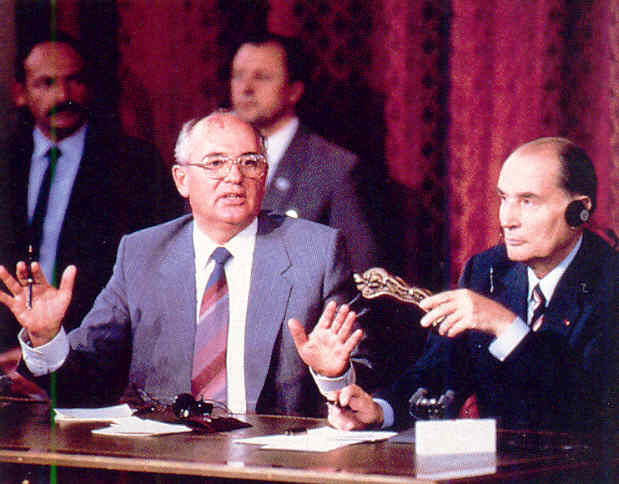
Soviet Premier Gorbachev
meets with French President Mitterrand in Paris – 1985
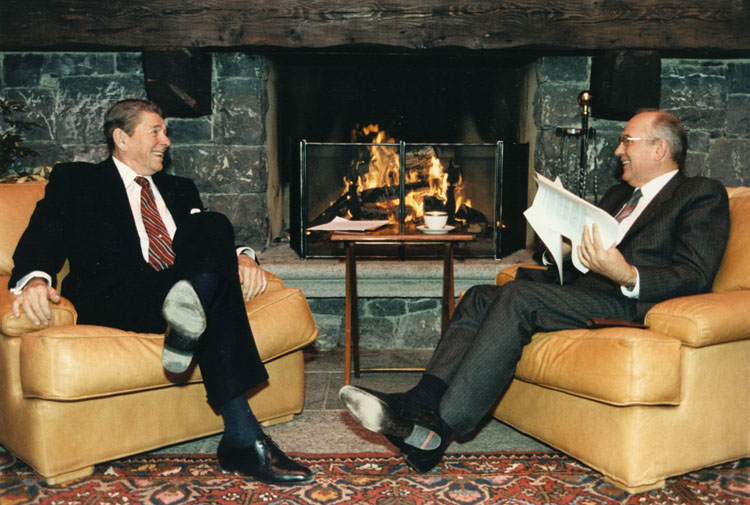
Reagan and Gorbachev at the
first Summit in Geneva, Switzerland – 19 November 1985
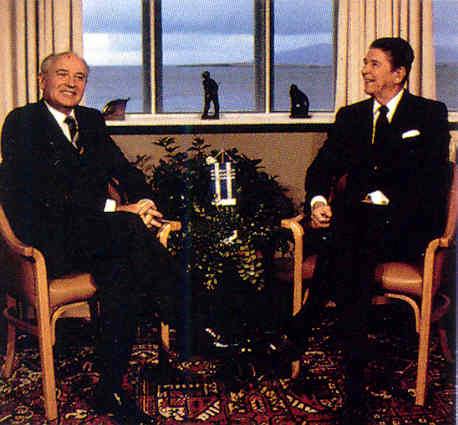
Gorbachev and Reagan meet
in Reykjavik, Iceland – autumn 1986
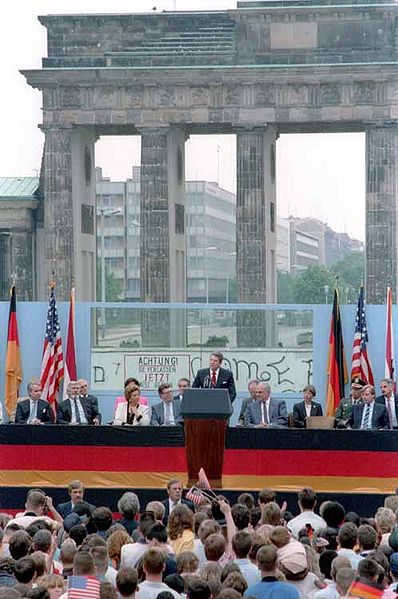
"Mr. Gorbachev, tear down
this wall!" – June 1987
Gorbachev, realizing that the Afghan War was merely weakening further the Soviet strategic
position globally, decides to call it quits in Afghanistan – July 1987
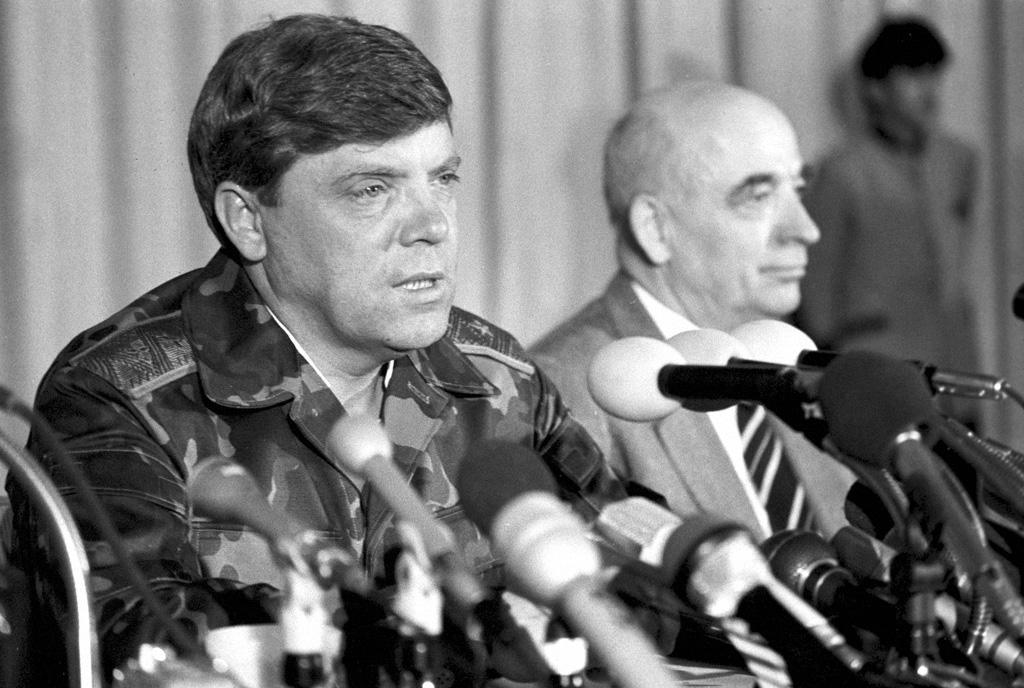
Soviet Commander Boris Gromov
announcing the Soviet troop pullout from Afghanistan – July
1987
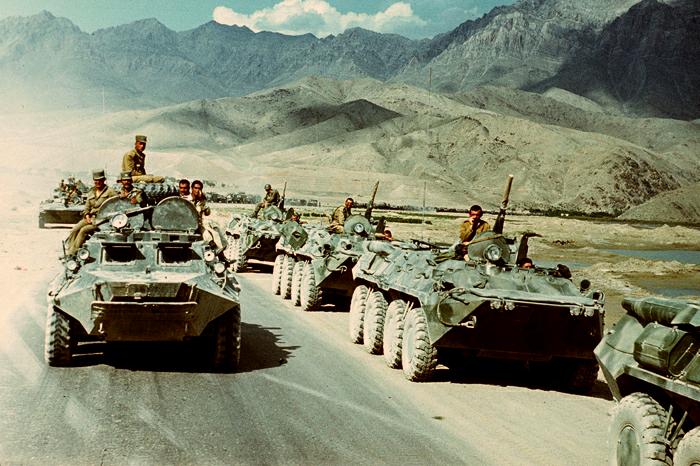
Afghan troops (on the left)
watching Soviet troops leaving Afghanistan – 1988
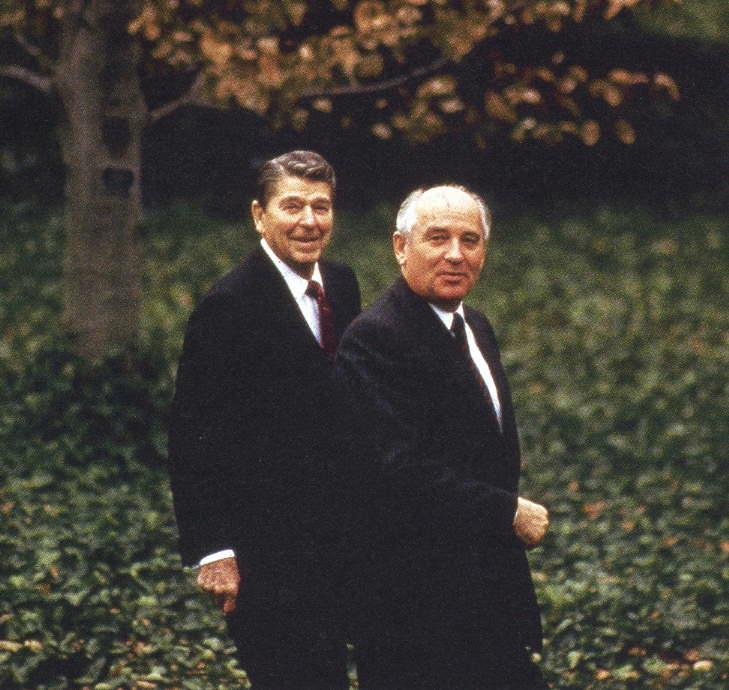
Gorbachev with Reagan on
a summit visit to Washington – 1987
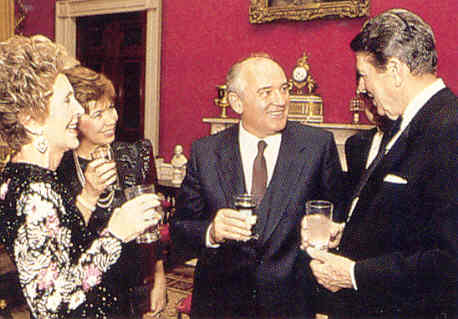
The Gorbachevs visit the
Reagans in Washington – December 1987
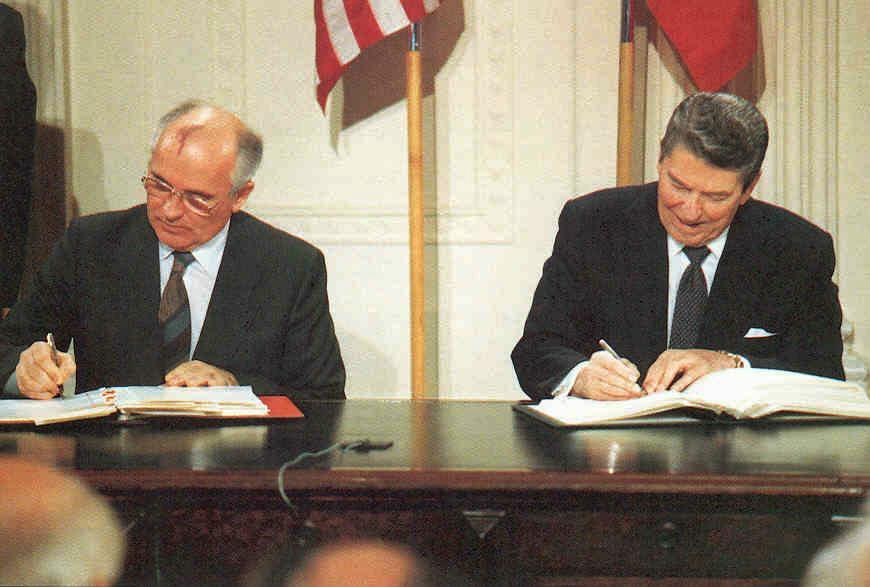
Gorbachev and Reagan sign
the Intermediate Nuclear Forces (INF) Treaty in Washington – 1987
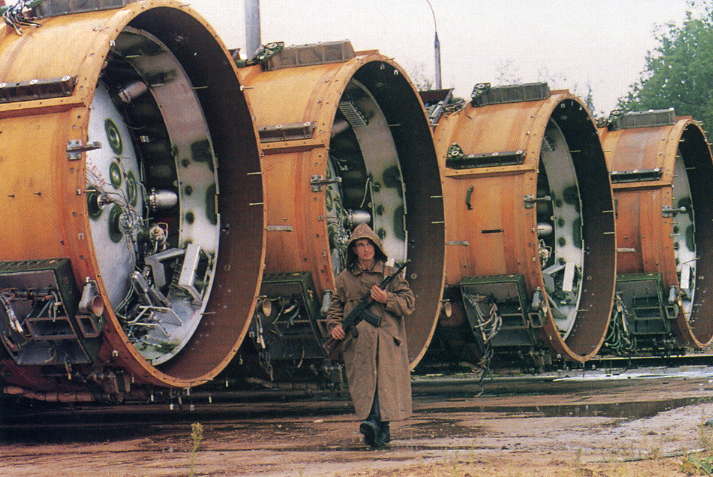
A Soviet sentry guarding
ICBMs scrapped under a 1987 disarmament treaty with the US
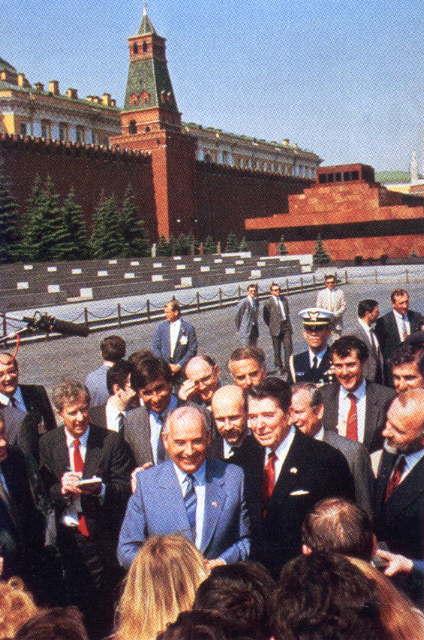
Gorbachev and Reagan in Moscow
- 1988
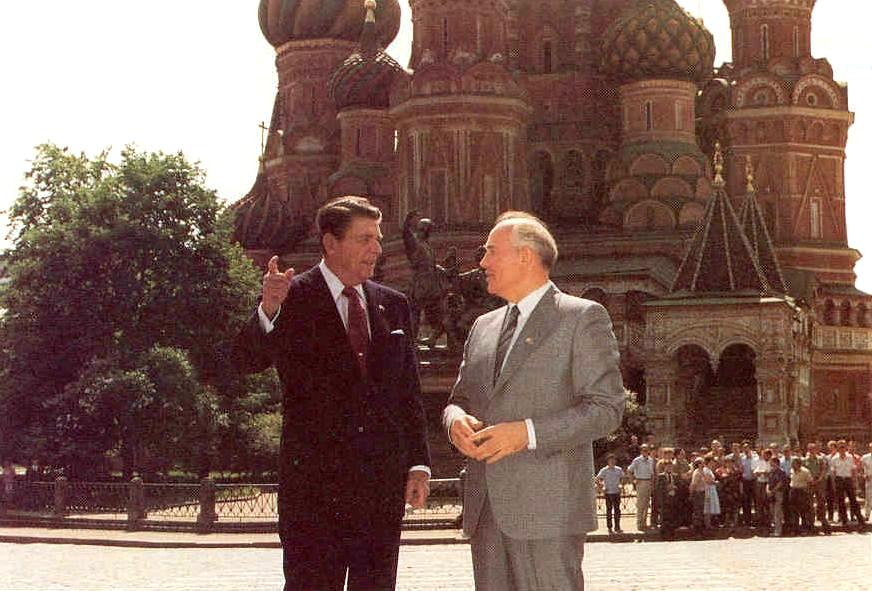
President Ronald Reagan visiting
with Soviet Premier Mickail Gorbachev in Moscow,
chatting in front of St.
Basil's Cathedral on Red Square
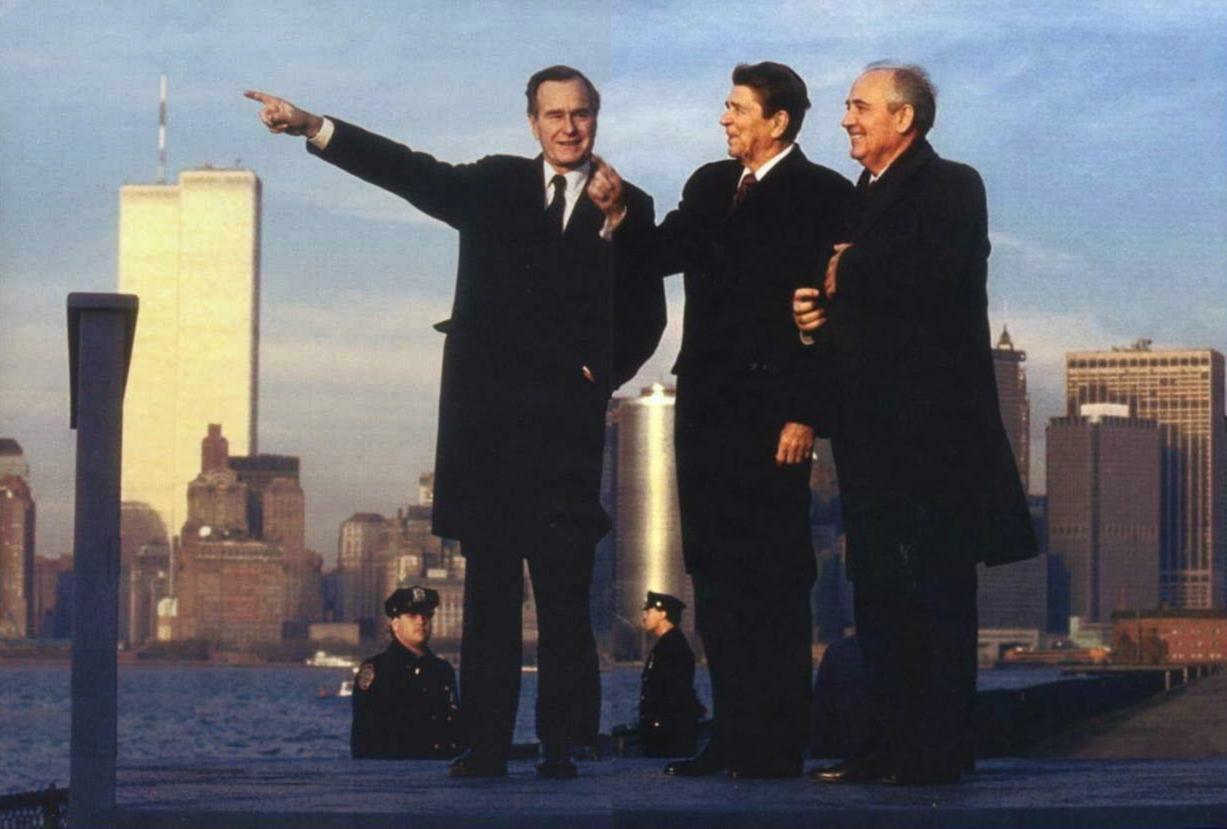
Soviet Premier Gorbachev
visiting Reagan and Bush in New York
shortly after the latter's
electoral victory in 1988

 Troubles in the Middle East
Troubles in the Middle East
 The
Iran-Contra affair threatens to pull down the Reagan presidency
The
Iran-Contra affair threatens to pull down the Reagan presidency China begins to self-reform under Deng Xiaoping
China begins to self-reform under Deng Xiaoping The rapid decline of the Soviet Empire
The rapid decline of the Soviet Empire Another
event adds a strong touch of tragedy to the Reagan years
Another
event adds a strong touch of tragedy to the Reagan years







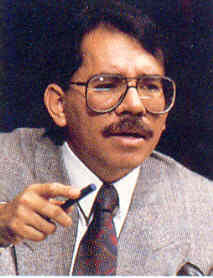
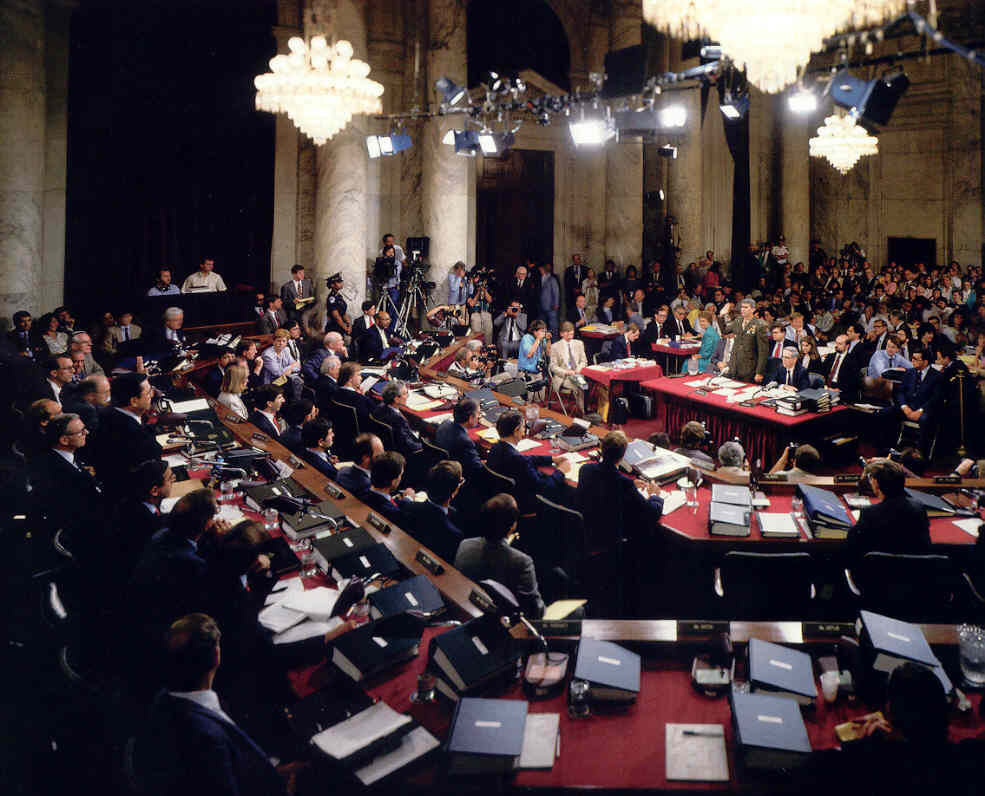
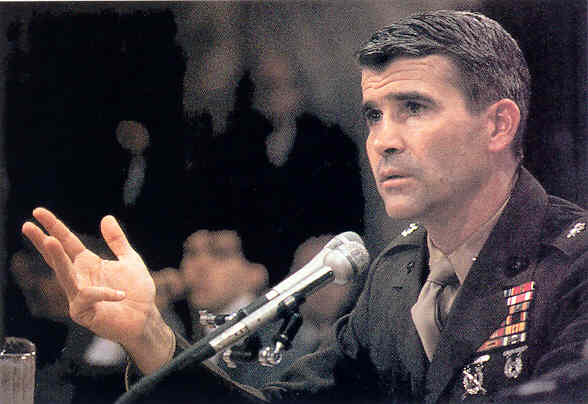
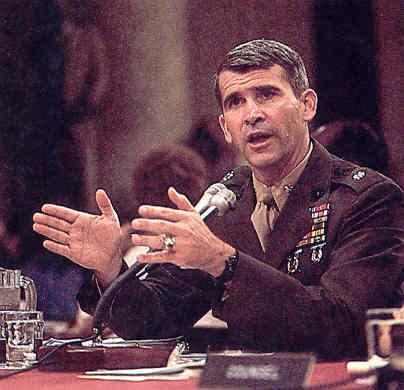
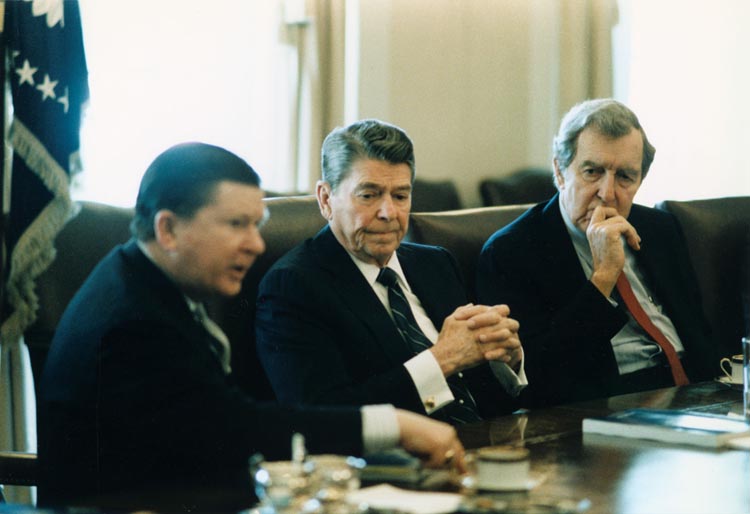
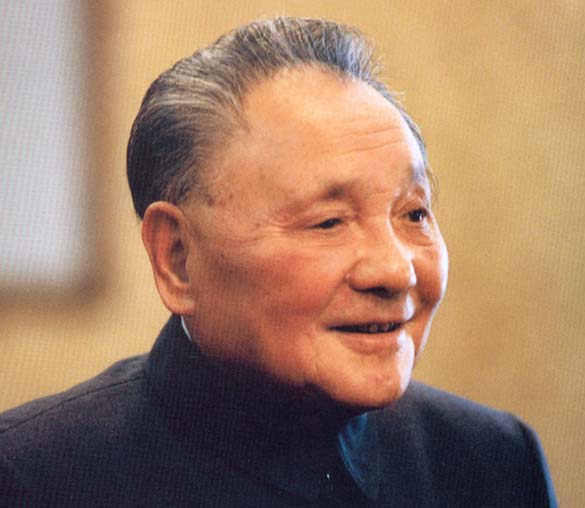
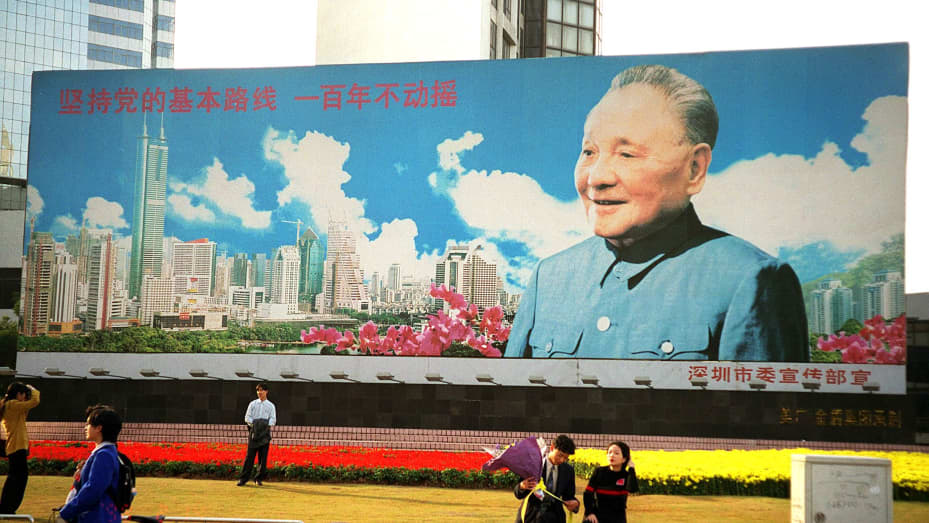
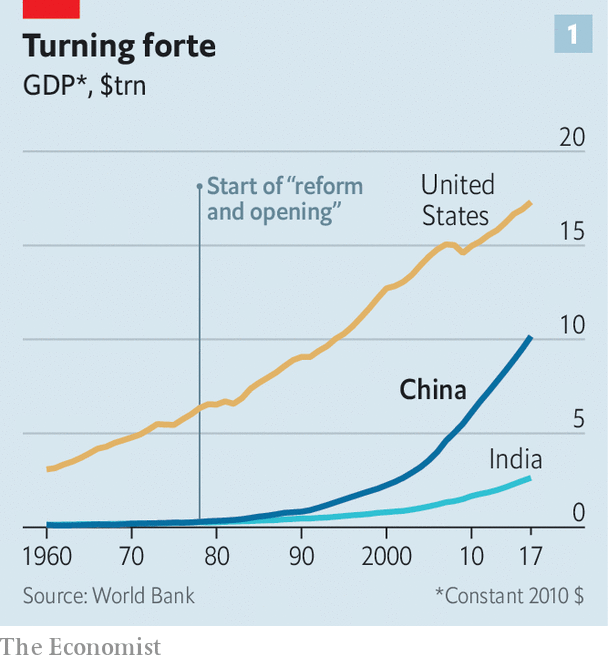
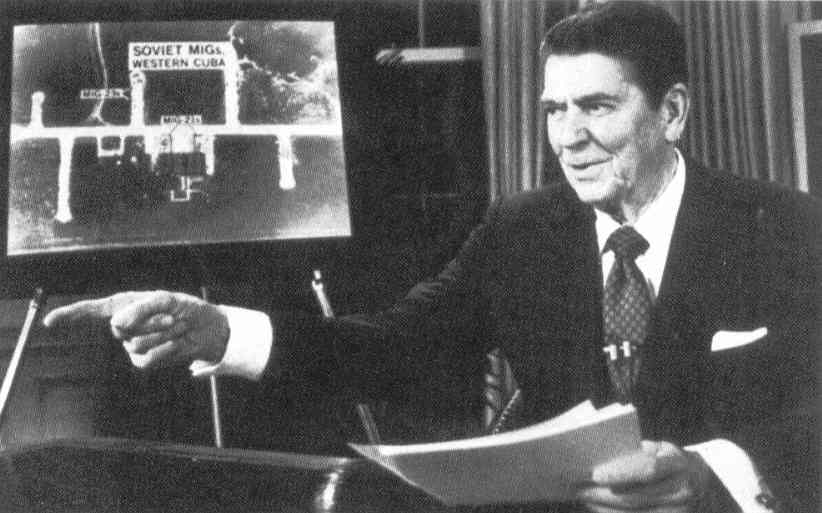
































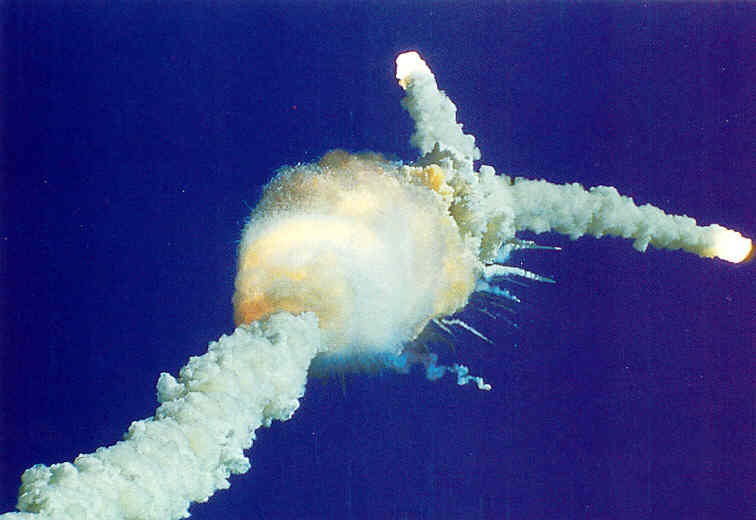

 Miles
H. Hodges
Miles
H. Hodges